NSCAD is excited to announce the ten finalists of the 2024 NSCAD Student Art Award. The award recognizes the exceptional works made by NSCAD students across ten disciplines at the university. The winning artist receives a $5,000 purchase prize, with their artwork added to a special section of NSCAD’s Permanent Collection. The remaining nine finalists will receive $1,000 each. This premier award provides young artists with visibility and promotion as they embark on their careers.
Meet the finalists

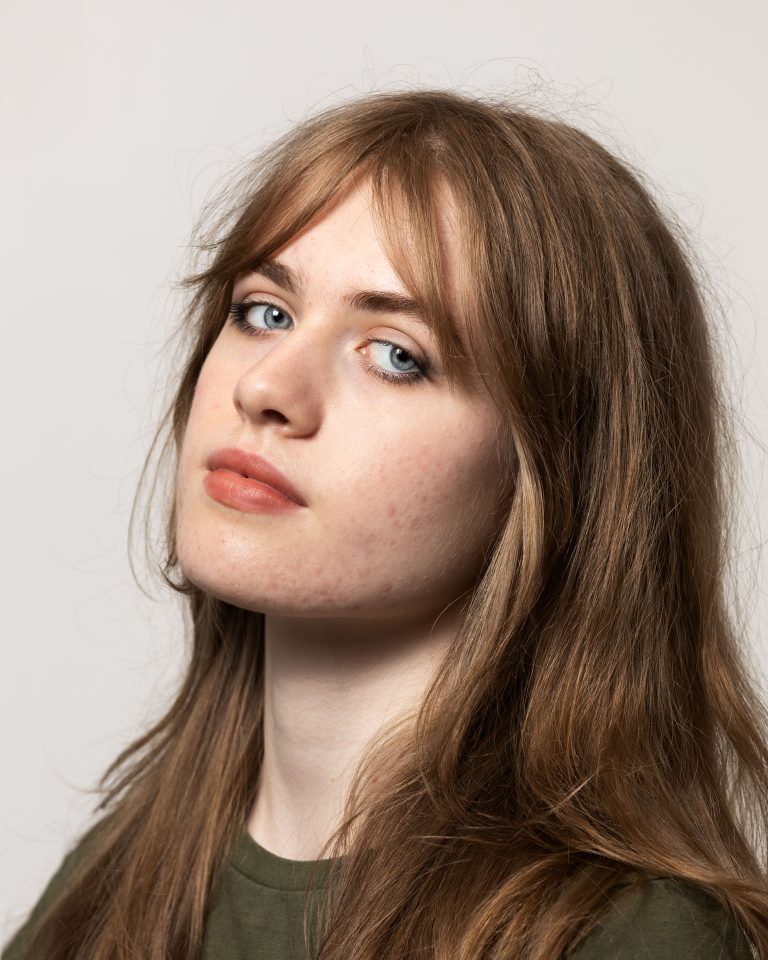

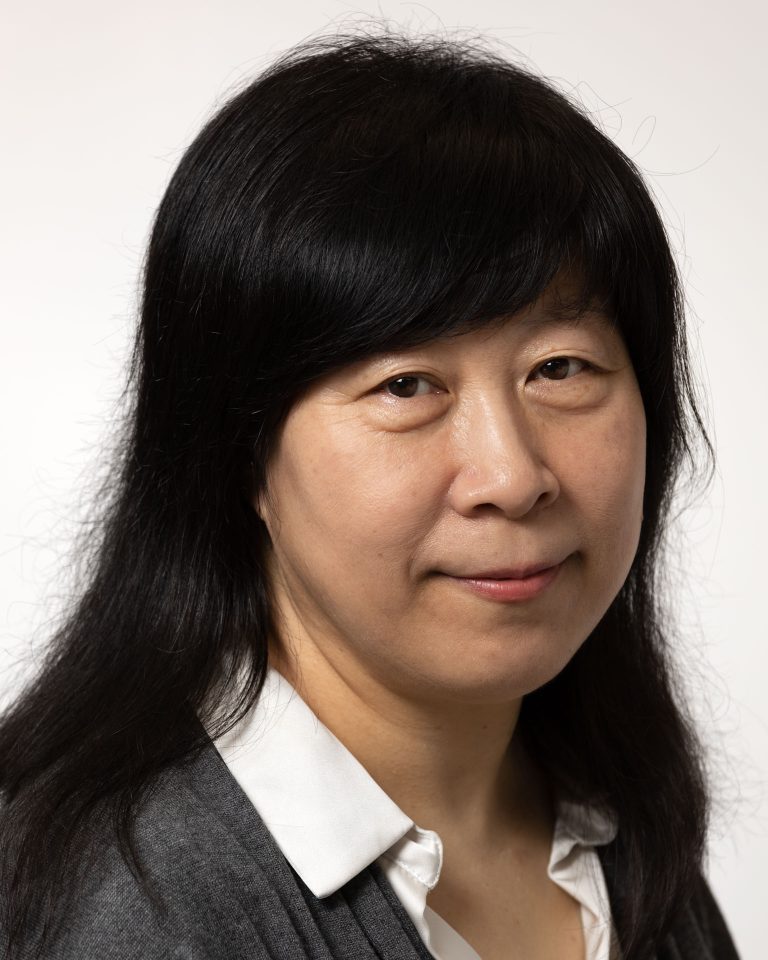


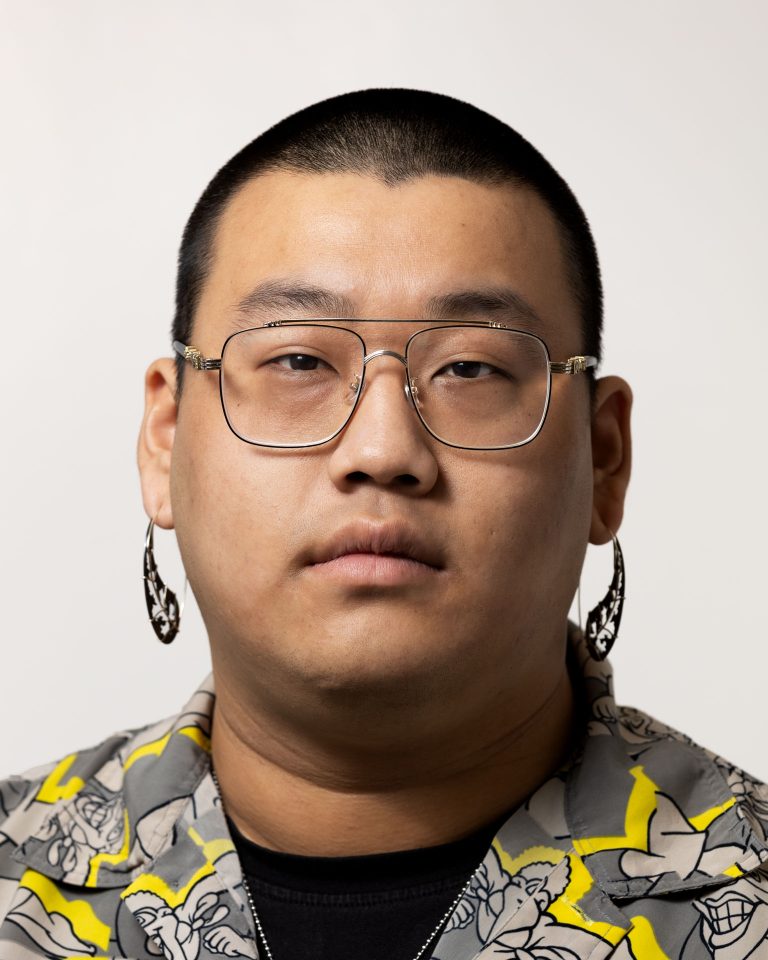




a. laurel lawrence – Our sap fills the mouths of hungry saints
Our sap fills the mouths of hungry saints is a short film described as “a queer fantasia” by lawrence, a queer artist from New Brunswick. The eight-minute video is an experimental film shot on a 16mm camera. Inspired by ancient funerary traditions, where cannibalism is considered an act of love and worship, the film explores the intimacy between queer bodies navigating love and desire, while drawing comparisons to eating and hunger. Using analog filmmaking techniques, lawrence depicts love and desire as a hunger for another person that cannot stop. The film stars M. Black and Sof Kreidstein as the actors.

Chris Sampson – Sananguatik | Carver
When a person sees a sculpture, whether sitting on a shelf or in an art gallery, they tend to look at it from all directions — except one: the bottom. Sananguatik | Carver is a series of Inuit carvings that focuses on the bottom and “underside” of the artwork. As a Labrador Inuit artist and photographer, this project is close to Sampson’s heart as a means to connect with and understand his Inuit heritage. Rather than place emphasis on the carvings that have commodified Indigenous culture, he wanted to focus on the marks of the makers, the texture and colour of the stone, and the indents left behind, compelling viewers to see the sculptures from a different perspective. By using soapstone and serpentine from the Labrador landscape, Sampson celebrates his home and the resilience of Inuit artists.
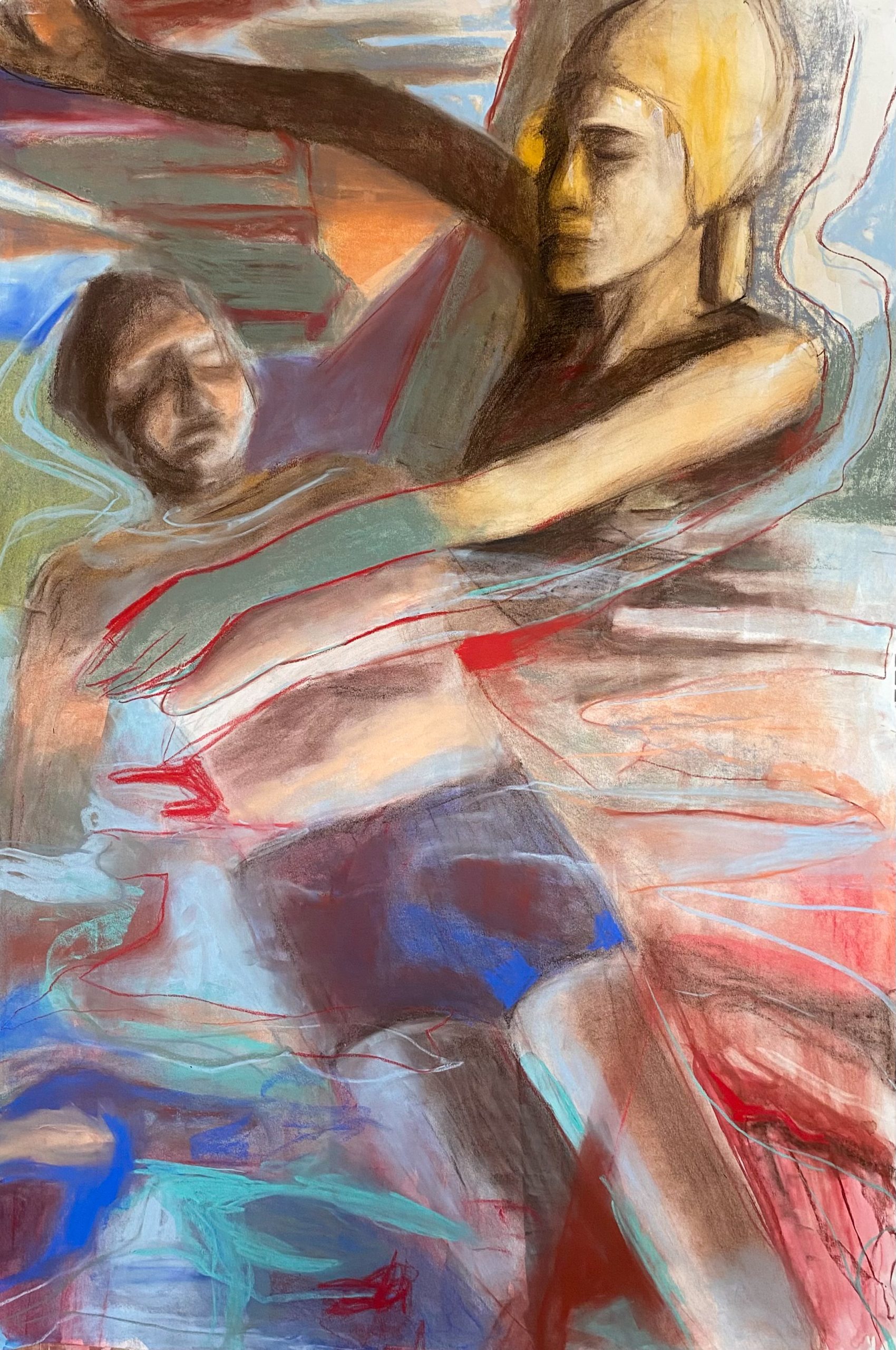
Daria Herashchenko – Dissolving
Dissolving is a chalk pastel and watercolour drawing inspired by an intermediate drawing assignment during Herashchenko’s time as a student at NSCAD. She was given a photograph of people swimming at the beach and decided to rearrange the narrative to tell a different story. Dissolving depicts a woman who is watching a man sink and slowly dissolving into the water. The Ukraine-born Herashchenko wanted to create a contrast between the worries of the outside world and the inner peace within oneself. She uses sharp lines to depict the woman’s apparent concern, and soft flowing lines to show the man’s acceptance of the rising waters.

Kalani Chen-Hayes – Operatic Macbeth
Inspired by William Shakespeare’s ‘Macbeth’ and Taiwanese opera traditions, Operatic Macbeth falls between the realms of costume and wearable art. The clothing is made from hand-woven tartan with a silhouette that is reminiscent of a Puritan ensemble. Symbols of masculinity are playfully inflated, asserting themselves against bold colors, which is further queered by the tailoring of the garments to a bound chest. Chen-Hayes wanted to make a garment that viewers would be able to connect to and instantly understand who the character is just by looking at them. It was an opportunity for Chen-Hayes to combine their love for weaving and fashion together in one package.

Kate Dong – Hymns
Hymns is an installation that reflects on the issues of contemporary culture from the perspective of the Christian faith. As a devout Christian, Dong wanted to express the heartbreak and loss of modern society, using ceramic art and sculptural work to create delicate flowers, and climbing vines as a path to salvation. The installation is made up of more than 30 flower branches, arranged in a way that leads viewers to a cross. Dong uses objects and materials in her artwork —such as seeds, branches, and stones—as symbolism for people in different roles in life. The first part of the work took 10 months to complete, which Dong sees as a form of humility and surrender to art as a form of gospel. She hopes her work will help people understand the serenity and safety that Jesus’ love brings to his followers.

Page Cowell – Construct
Construct is a series of mutoscopes (an early motion picture device) made from kitchen utensils and tools used in carpentry. As an artist from Tillsonburg, O.N., Cowell was inspired by the mundane parts of daily life; such as frying an egg, peeling an apple, grating cheese, and other small tasks that take up parts of our day. The machines also spark a conversation about gendered workspaces and the similarities between the two false dichotomies of gendered tasks. Cowell describes the work as a “symphony,” as the animation dances across the machine while the viewer winds them into motion. The action of winding the machine becomes an act of care and service by the viewer, regardless of gender.

Rayce Min – Expressions
Expressions is a series of five jewellery and metalsmithing pieces all formed from copper sheets and cast bronze. The pieces are inspired by Min’s upbringing in a masculine household; where he was not allowed to show his true emotions. He uses his work as a form of expressing his inner thoughts and feelings, designing each piece based on human facial features and emotions. The pieces include: “I Roll My Eyes Like a Gambler Rolls Dice” the cup, “Mood Swings, I’m Either Happy or Upset,” the vase, “Hold On to the Light of Your Life” candle holder, “Smoke a Cigarette, Take a Break,” the incense holder and “Breakthrough,” the wall piece.
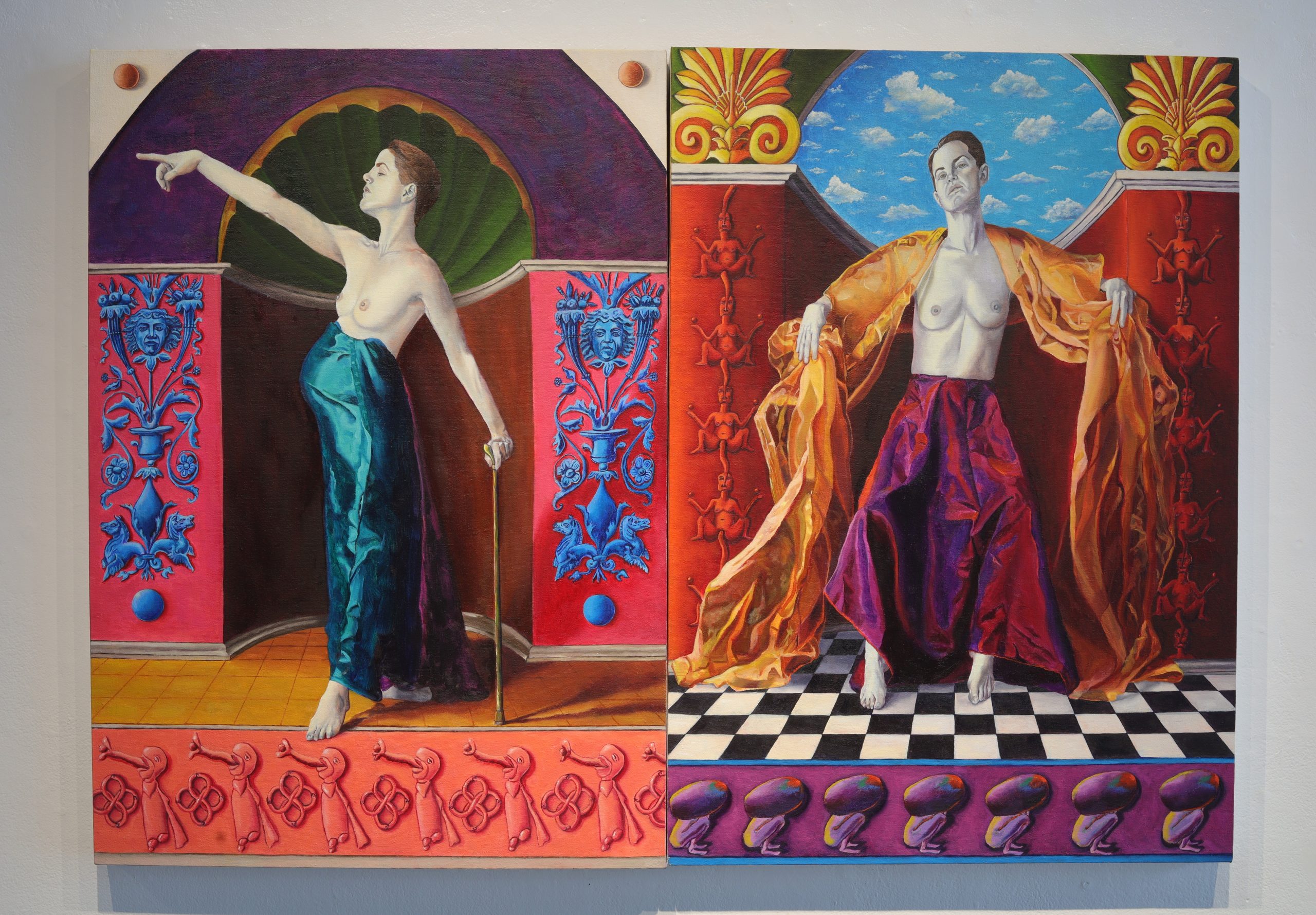
Silas Wamsley – His Grace
His Grace is a diptych inspired by late Medieval and early Renaissance paintings. As a trans-masculine artist, Wamsley wanted to explore their relationship with femininity and how the trans body is legitimized and presented in art. His Grace is reminiscent of devotional paintings from the Christian religion and the complex history of gender-crossing saints in Europe, who were mostly female-assigned people living as male monks. The painting becomes a medium, turning the transitional experience many trans people go through into a spiritual one. The diptych depicts Wamsley as a figure of authority but also in a state of vulnerability, wrapped in lavish fabrics. By bearing their chest, Wamsley pays homage to the gender-crossing saints who often met violent ends where they had to bare their chest to prove they were not who they claim to be. This begs the question of who decides how these gender-variant bodies are presented and why.
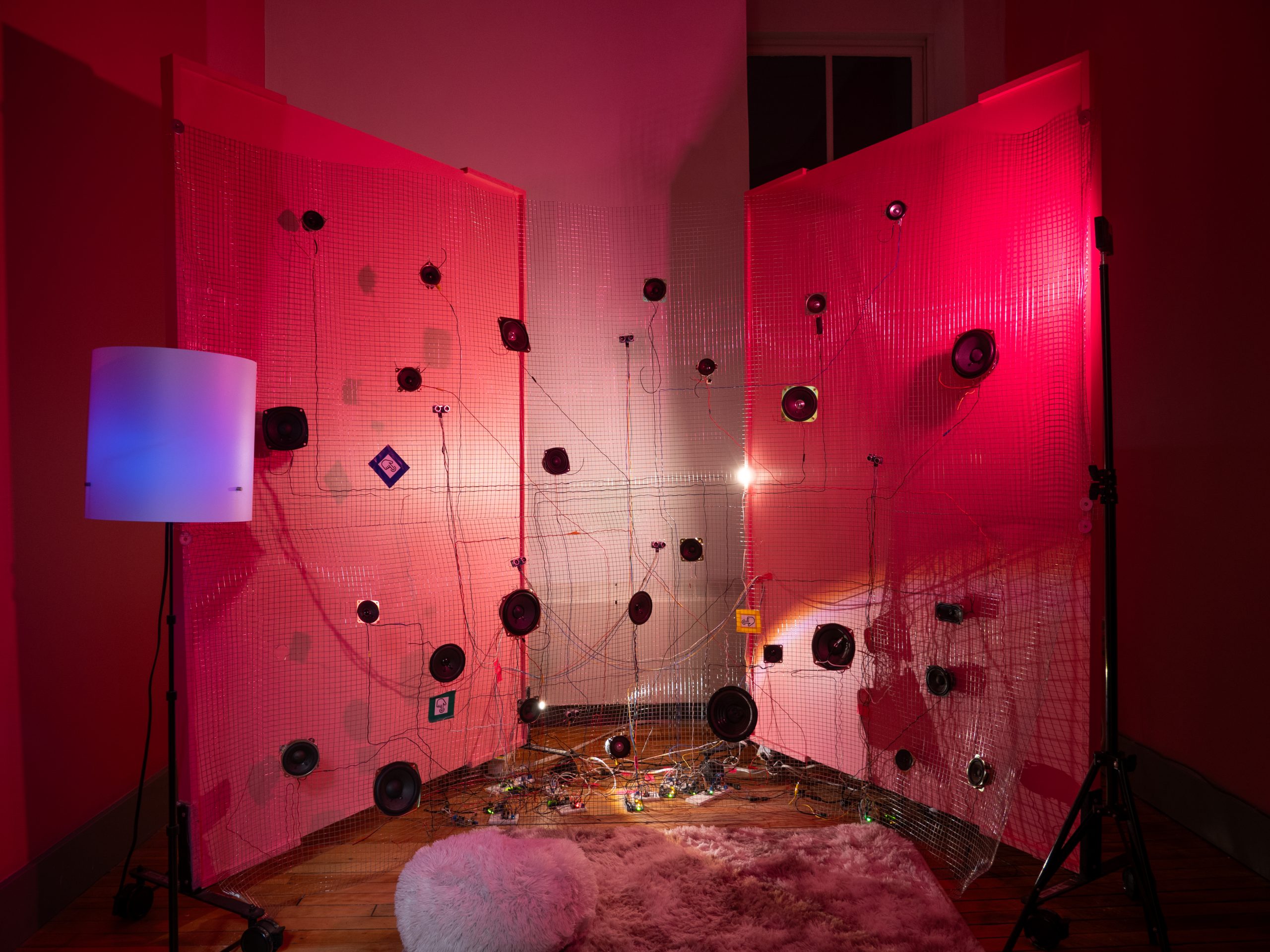
Sunny Babcock – Breathless Ensemble
Breathless Ensemble is an interactive sound sculpture created as a form of “queering technologies” and exploring intersectional sound practices. As a queer artist, Babcock uses media as a mode of expression and started Breathless Ensemble by collecting raw speakers over the last year. The sculpture is installed on a large sheet of steel mesh, with the speakers, wires, and circuits hanging off or running through the mesh. The artwork explores the relation between sound technology and the voice, specifically queer voices. Placing a microphone against their larynx, Babcock records the sounds of their glottal stop—also known as vocal fry — and plays them back on the speaker. The vocal fry is commonly stereotyped as a “queer voice” or a queer way of speaking, however Babcock reclaims that label and turns this sculpture into a dialogue between human and non-human sound sources.
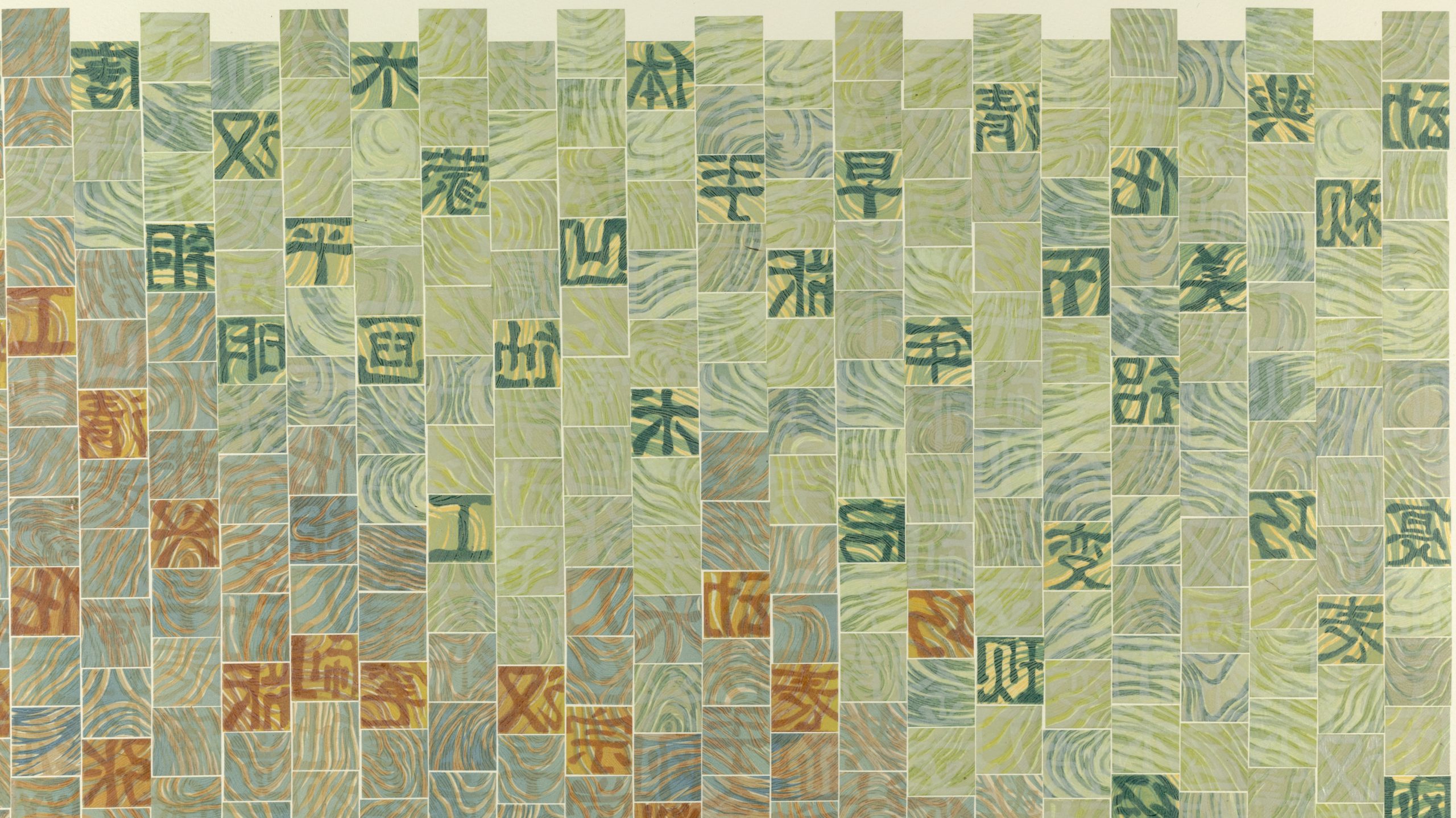
Yongxuan Zheng – Moveable Type
Movable Type, is a hand printed woodcut collage composed of more than 600 squares of random movable type that have been flipped, making them difficult to read. The work uses ideogrammatic forms to construct a layered metaphor; the Chinese cultural signifiers represent the challenges many immigrants face after arriving in Canada. The form of the work is simultaneously a wall, and a landscape; it is based on research into ancient Chinese printing technology as a culturally significant material form. The work is intended to express the duality of the artist’s evolving immigrant experience.
